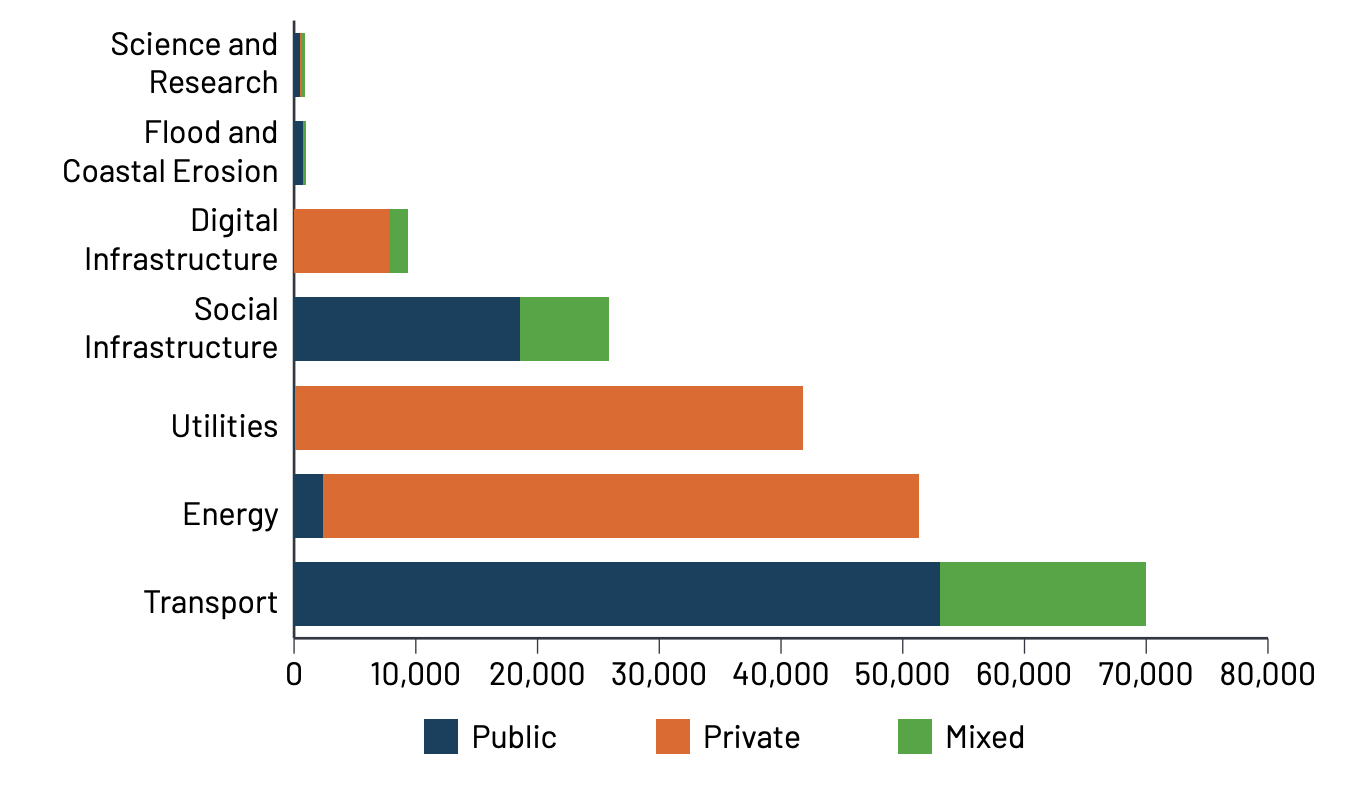A record £650bn of public and private investment will be pumped into infrastructure over the next decade, according to the updated Infrastructure Pipeline launched today.
This pipeline includes for the first time the forecasted future workforce demand based on planned investment in projects.
In the more immediate four-year period up to 2024/25, the Infrastructure and Projects Authority estimates over 425,000 individuals will be needed on an average annual basis to deliver planned investment of £200bn as the Government’s Build Back Better efforts get into full swing.

Funding mix of pipeline from 2021/22 to 2024/25 by sector (£’m)

To help suppliers make business-critical decisions as the country emerges from the coronavirus crisis, the Government is also setting out details of £30bn of planned procurements over the next 12 months in social and economic infrastructure.
National Infrastructure and Construction Pipeline spreadsheet
This will create new opportunities for thousands of apprentices, technicians, graduates and skilled workers.

Today’s new Transforming Infrastructure Performance: Roadmap to 2030 also sets out a vision to put digital technology and innovation at the heart of our approach to infrastructure investment and delivery.
This pipeline outlines the extent to which new work will incorporate delivery through Modern Methods of Construction.

Some 170 of the contracts in procurements, worth between £15.4bn and £22.4bn, are planned to include elements delivered by making best use of MMC.
Click here for link Infrastructure Pipeline webpage.













